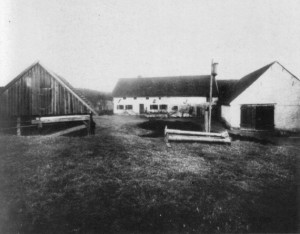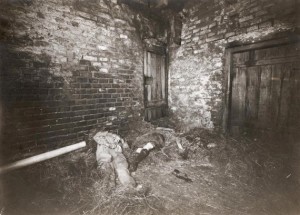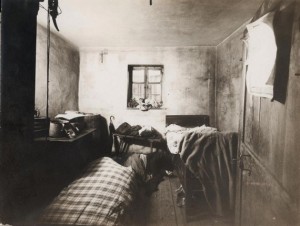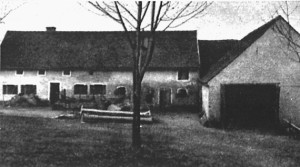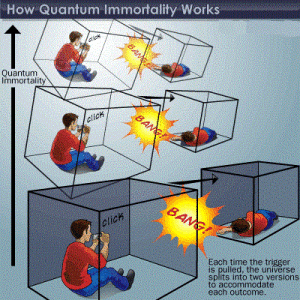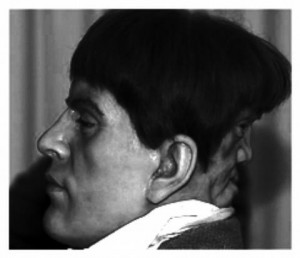While it seems that in recent days the case of Jack the Ripper has had the spotlight shone on it, and has been slowly brought out into the light, there are still some murder mysteries that have stood the test of time, and have over the years gained a reputation for their bizarreness as much as for their gore. One such mystery comes from the majestic alpine forests of the German state of Bavaria. The idyllic mountain scenery and pristine nature here seem to be an unusual location for violent murder, yet in 1922 one quiet farmstead by the name of Hinterkaifeck was the setting for one of the most brutal, mysterious, and perplexing murders in German history.
Hinterkaifeck was a farm located within the woods outside Groebern, between the Bavarian towns of Ingolstadt and Schrobenhausen, about an hour’s drive from Munich. The farm was occupied by a family called the Gruebers, which consisted of the husband Andreas, his wife Cazilia, their middle aged, widowed daughter Viktoria, and their two grandchildren Cäzilia (7) and Josef (2). They lived in relative isolation, their farm being nestled away in a forest 1km away from the main town of Kaifeck.
Despite the remoteness of their farm, the well-off family was fairly well known in the area, although not for the best of reasons. Andreas Grueber was known as an unfriendly loner who beat his wife on a regular basis and was not well liked by the town folk. It was also rumored that the youngest grandchild, little 2 year old Josef, was the result of an incestuous relationship between Adreas and his daughter Viktoria. Andreas was reportedly so obsessed and infatuated with Viktoria that he had actively forbidden her to marry again and kept her under his strict control. In addition to mistreating his wife, Andreas was also known to be severely abusive with his own children, of which Viktoria was the only survivor. In general, the family was sullen, reclusive, and mostly kept to themselves. The only one that had a relatively good reputation in the town was Viktoria, who had a remarkably beautiful voice and sang on the church choir.
The farm’s descent into true strangeness started when the maid suddenly quit her job and wished to leave immediately. When asked why she had so suddenly decided to abruptly leave, Maria explained that she had been hearing strange voices and other noises in and around the house, as well as the sound of disembodied footsteps emanating from the attic. The terror stricken maid had become convinced that the house was haunted and wished to stay there not a moment longer. She was reportedly white faced and emaciated when she said her final goodbyes. After her departure, the Gruebers chalked it up to the poor woman being simply mentally disturbed.
Six months later, things got more bizarre when in the middle of March, 1922, Andreas was surveying his property after a snowstorm and discovered odd footprints in the snow that originated in the thick surrounding forest and led right up to the house. Eerily, there were no footprints to be found that actually led back out to the woods. Andreas searched all around the property looking for any further sign of the mysterious tracks, but there were none. Alarmed that a potentially dangerous intruder could be hiding in his home, Andreas conducted a thorough search of the house, and even the barn and tool shed, but found no further footprints and no sign of an intruder.
 That same night, Andreas was awoken by strange, inexplicable noises coming from the attic. Remembering what the maid had said about ghosts and the noises from the attic, he checked there too, but found nobody hiding there. With apparently nobody hiding on the property and no footprints leading back out into the woods, it seemed like the trespasser had simply vanished. Satisfied that no one was there yet still a bit unsettled, Andreas went to bed only to wake up the next morning to find a strange newspaper on his porch that no one in the family recognized. Not long after that, on March 30th, 1922, a set of keys to the house mysteriously disappeared and could not be found anywhere. In his search for the keys, Andreas came upon the disturbing discovery of scratches on the lock to the tool shed, as if someone had tried to pick it.
That same night, Andreas was awoken by strange, inexplicable noises coming from the attic. Remembering what the maid had said about ghosts and the noises from the attic, he checked there too, but found nobody hiding there. With apparently nobody hiding on the property and no footprints leading back out into the woods, it seemed like the trespasser had simply vanished. Satisfied that no one was there yet still a bit unsettled, Andreas went to bed only to wake up the next morning to find a strange newspaper on his porch that no one in the family recognized. Not long after that, on March 30th, 1922, a set of keys to the house mysteriously disappeared and could not be found anywhere. In his search for the keys, Andreas came upon the disturbing discovery of scratches on the lock to the tool shed, as if someone had tried to pick it.
On May 31st, 1922, amid all of this high strangeness, and a day after the discovery of the lock scratches and the disappearance of the keys, a new maid by the name of Maria Baumgartner came to the house to replace the one that had fled in a panic six months earlier. Maria’s first day on the job would prove to be her last, and this would also be the last day anyone would see the Gruebers alive.
On April 4th, 1922, people in town became concerned about the Gruebers. No one had seen any of the family in days and the older grandchild, Cäzilia, had not been showing up for school. In addition, none of them had been to church and the Grubers’ unclaimed mail had been piling up at the post office. Viktoria in particular was never known to miss church due to her high standing as a member of the choir. A few of the townspeople decided to head out to their property and check up on them to see what was going on. Upon arriving at the farm, the search party’s calls went unanswered. A preliminary check of the outside of the farm turned up no sign of the family, and the whole place had an eerily quiet atmosphere.
They decided to inspect inside the barn, and upon opening the door were met with a gruesome sight. There lying in a pool of blood were the bodies of Andreas, his wife, his daughter Viktoria, and the elder granddaughter Cäzilia. Oddly, their bodies had been carefully stacked on top of each other and covered with hay. The horrified search party proceeded to frantically look for the other members of the family and found them in the farmhouse. The youngest grandchild, Josef was found dead in his cot in his mother’s bedroom, and the maid, Maria, was also found killed in her bed chamber. Both had also bled profusely and were found lying in pools of coagulated blood. In total six people, all five Gruber family members plus one maid, had been brutally killed in cold blood.
The townspeople immediately called the police, and within hours investigators from the Munich Police Department had arrived at the scene. Preliminary autopsies done on the bodies showed that all of the victims had been killed with blows to the head inflicted by a pickaxe. Viktoria’s body also showed signs of strangulation as well but it was not thought to be the cause of death. The perpetrator was guessed to be very familiar with the use of a pickaxe, since all of the wounds had been precise and confidently delivered, with only a single, decisive blow to the head evident on each corpse and no such wounds to the bodies. All of victims except one were believed to have died instantly, all except Cäzilia, who showed evidence of having survived several hours after being grievously wounded, and tufts of hair had been torn from her head for unknown reasons. Most of the victims were dressed in bed clothes except Viktoria and Cäzilia, who were dressed in regular clothes. This plus the fact that Maria and Josef had been killed in bed suggested that the murders had happened in the evening, right around bed time.
An investigation of the crime scene led police to the conclusion that someone had lured Andreas Gruber, his wife, and his daughter Viktoria into the barn one by one to dispatch them with the pickaxe, after which the murderer had entered the farmhouse to finish off little Josef and the maid as they lay in their beds. It was believed that Viktoria and Cäzilia had likely been the first to arrive and be attacked since they had not been dressed for bed when they had gone out to investigate whatever had drawn them to the barn. One detail that police noticed was that all of the corpses had been covered somehow. The stacked bodies in the bar had been covered with hay, the maid’s body had been covered with bedsheets, and Josef’s body had been covered with one of his mother’s skirts.
So far, so scary, but further analysis of the bodies turned up some very unusual findings. The date of death was determined to be Friday, March 31st, 1922, but after questioning the neighbors of the farm, this proved to be rather bizarre. It was found that witnesses near the farmhouse had seen smoke coming from the chimney over the entire weekend, suggesting someone had been home. The house also had evidence that someone had only recently eaten meals there, and one of the beds appeared to have been slept in not long before the bodies had been discovered. In addition, it was found that all of the cattle and livestock were well fed and had recently eaten, which was an odd finding seeing as everyone who typically cared for them had been dead for nearly a week. In fact, none of the animals on the farm had been harmed in any way. The dog, which was found barking in the barn, had been patiently tied up by whoever had killed the family and was shaken but otherwise healthy. This information left investigators rather puzzled, as it implied that whoever had killed the family had done their dark deed and then stayed around for several days feeding the cattle and making themselves at home before fleeing the scene. Why would anyone do that? Nobody knew.
The baffled police went about struggling to find a motive, but came up with more mysteries. At first it was presumed that the motive must have been pure and simple robbery. After all, the Grubers were a very wealthy family and it was not uncommon to find vagrants and thieves in the general area, however, although some paper money had been taken off of the corpses, a significant amount of gold coins and valuable jewelry had been untouched. Surely someone with robbery in mind who had stuck around the farm for days after the murders would have uncovered these valuables? Curiously, it was found that Viktoria had emptied her bank account a few weeks previously and left a 700 goldmark donation to her church for what she’d called “missionary work,” but the rest of her money was unaccounted for. It was not known if this had any connection to the murders, and so it remained merely an odd detail.
Police then started to suspect that the murders had been a crime of passion. Suspicion fell on a man by the name of Lorenz Schlittenbauer who had been a suitor of Viktoria’s. Viktoria had always claimed to the end that Josef had been Schlittenbauer’s son, but since everyone in the village thought that Josef had been the result of an incestuous affair between Andreas Gruber and Viktoria, it was believed that Schlittenbauer could have lashed out in a jealous fit of rage. It also could have been to escape alimony payments, because it later came to light that Viktoria had been on the verge of suing Schlittenbauer for this right before the murders. Since he had been remarried and with another child at that point, who had sadly died at a young age, having to pay for alimony payments for a child he couldn’t even be certain was really his when his own had died may have been a trigger for the violence.
Other weird little details also seemed to point to Schlittenbauer’s involvement. First off, he just so happened to be one of the members of the original search party who had gone to the farm to look for the Gruebers after they had gone missing. While he had been there, it was reported that the dog tied up in the barn had taken a particular dislike to Schlittenbauer, and had barked profusely at him the whole time he had been there. In addition, one witness said later that Schlittenbauer had seemed to be remarkably unperturbed by the sight of the bloodied bodies, and had been able to unstack the bodies in the barn without showing any sign of disgust. When he had been asked why he was disturbing the corpses before police arrived, he was reported to have said that he needed to find his boy. Beyond such an amazing calmness in the face of such death and violence, Schlittenbauer also demonstrated a beyond normal familiarity with the farm, and was able to navigate his way round the property effortlessly, as if he had spent a lot of time there. All of this certainly raised eyebrows, and Schlittenbauer was questioned extensively by police, but in the end they simply did not have enough concrete evidence to link him to the crime and he was never arrested for it. In fact, to this day no one has ever been arrested for it.
Regardless of who actually committed the murders, there are many other unexplained features of the case. Why did the perpetrator hide out at the farm for so long before making their move? Surely the footprints and noises in the attic must have been those of the murderer, but these events were happening long before the murders took place. If the original maid who quit on the grounds of a haunting had in fact been hearing the murderer, then that would mean the culprit would have been hiding out undiscovered on the property for a full 6 months. In addition, why would the murderer stay nearly a week after the killings, have meals, and even feed the cattle? What purpose could that possibly fulfill? Nobody knows.
The bodies of the six victims were eventually buried in a graveyard in Waidhofen, without their heads since those had been sent to Munich for analysis and had never been returned. The skulls are thought to have been lost sometime during the chaos of WWII and no one is really sure what happened to them, which is a mystery in and of itself. The six headless bodies are buried alongside a memorial.
The investigation of the Hinterkaifeck murders would ultimately go on for years, with over 100 suspects questioned, without getting police any closer to solving the mystery, and the case has become one of Germany’s most enduring unsolved mysteries. To this day, not a single suspect has ever been apprehended for the crimes. Police got so desperate that at one point they even hired clairvoyants to handle the skulls of the murder victims, to no effect. Over the years, the mysterious murders have become fertile grounds for amateur sleuths to debate and pick apart the case in their search for answers, much like the Jack the Ripper case has stimulated similar ongoing analysis. Many theories from the rational to the fringe have been put forward to try and get a grip on the mystery.
One idea was that Viktoria’s ex-husband, Karl Gabriel, carried out the murders. Although Gabriel had supposedly been killed in the trenches of World War I, his body had never actually been found and had ever received a proper burial, so it was speculated that he may have come back for his wife. Upon hearing of Viktoria’s incestuous relationship with her father and of her involvement with Schlittenbauer, he could have snapped and murdered them all in a crime of passion. This theory was fueled by the reports of two people who came forward claiming to have met a Russian soldier after WWII who had claimed to be the “Hinterkaifeck Killer.” It has been speculated that he originally faked his death to be free of his wife, but had changed his mind and come back only to be less than pleased with what awaited him at home.
 Others have pointed to the seemingly paranormal elements of the case, such as the ghosts reported by the original maid on the farm, as well as the strange noises heard by Gruber himself, the mysterious newspaper, and the inexplicable footprints in the snow. In light of these details, there are those who think the culprit was no man at all, but rather some kind of vengeful supernatural force that had set its sights on the family.
Others have pointed to the seemingly paranormal elements of the case, such as the ghosts reported by the original maid on the farm, as well as the strange noises heard by Gruber himself, the mysterious newspaper, and the inexplicable footprints in the snow. In light of these details, there are those who think the culprit was no man at all, but rather some kind of vengeful supernatural force that had set its sights on the family.
The puzzling case poses so many questions and unexplained mysteries, and to this day it is no closer to being solved than it was back in 1922. For its part, the Munich Police Department has on occasion reopened the case. It did so in both 1996 and again in 2007, but on both occasions ran into nothing but dead ends. The police have said that it is likely that the case will never be solved, since so many years have passed, the evidence is scarce or has been lost over the years, witnesses and suspects have died, and because the investigative techniques of those days were fairly primitive, resulting in incomplete records and evidence. That doesn’t stop amateurs from trying, and debate and discussion on the murders is likely to continue for many years to come.
In Germany, the case of the Hinterkaifeck murders has become legendary, and is the subject of several books and movies. The farm itself is long gone, having been demolished in 1923 by villagers unhappy with having such a monument to death and horror still standing in the vicinity. All that stands there now is a monument and the memories and ghosts of those events pervading the quiet trees amongst which a truly terrible crime unfolded all those years ago. It seems that it is a very real possibility that those trees will remain the only ones to know what really transpired here.

